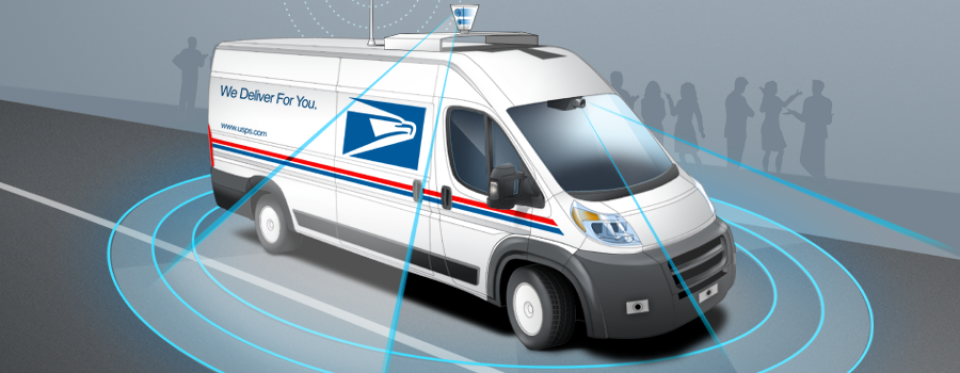Autonomous Vehicles for the Postal Service
October 2, 2017 (RARC-WP-18-001)
- Logistics companies, including the U.S. Postal Service, are already researching autonomous vehicles in order to increase driver safety, reduce fuel costs, and improve worker productivity.
- The OIG identified seven distinct ways the Postal Service could use the technology for last-mile delivery and long-haul transportation.
- Despite some remaining hurdles to full implementation, now is the time for USPS to begin testing the technology and refining its transportation strategy for the future.
Driverless cars have captured imaginations for decades, but the past few years have seen the technology move from dream toward reality. More formally known as autonomous vehicles, these self-driving cars and trucks have the potential to transform not only personal mobility but transportation and delivery as well. Other logistics companies are already researching ways they can realize the technology’s promise to increase safety, reduce fuel costs, and improve worker productivity.
The OIG has identified ways the Postal Service could use the technology in last-mile delivery and trucking. Applications include autonomous vehicles that assist carriers in delivering mail, a mobile parcel locker that is a complete departure from current delivery methods, and autonomous trucks that handle the transportation of mail on highways.
While none of the suggested use cases could be fully deployed today, it is worthwhile for the Postal Service to research and test the technology now so that USPS can be ready for the transportation network of the future. In fact, the Postal Service has already started to test the technology. The OIG suggests the Postal Service take a step-by-step approach: continuing to test the technology first, gradually automating vehicles where it makes strategic sense, and refining its AV strategy as the technology, market, regulation, and public perception evolve.

